In the last year, I tested out five popular monitor light bars from Amazon to see how well they work. I used each one extensively to understand what they offer, how they perform, and how they make a workspace bright and comfortable. Follow along in this article to learn more about each monitor light bar.
Full Disclaimer: We are an office furniture dealer and sell some of the products we review. To learn more about the products we sell, our review process and why you can trust us, please visit: Why we’re different. Who is BTOD.com and The Breakroom Blog?
Top 5 Monitor Light Bars on Amazon
1. Baseus Light Bar
The first light bar in the list is from the Baseus brand, which typically retails just under $40 at $37.99. I would consider most of the light bars that retail around the $30-$50 range to be in the mid-range for light bars. It has an average rating of 4.3 out of 5 stars and has received more than 3,500 reviews.
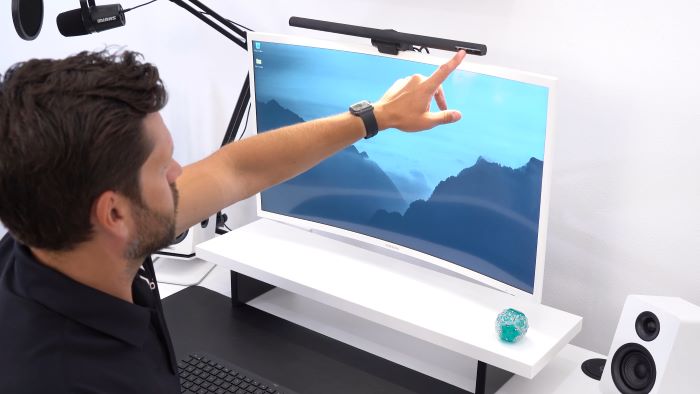
The Baseus light bar utilizes a weight system to help it stay on top of the monitor, similar to other light bars, but with a unique shape. It works best with thin and flat monitors. The pivoting head allows you to aim the light, providing a wide adjustment range, a unique feature compared to most light bars with limited adjustment.
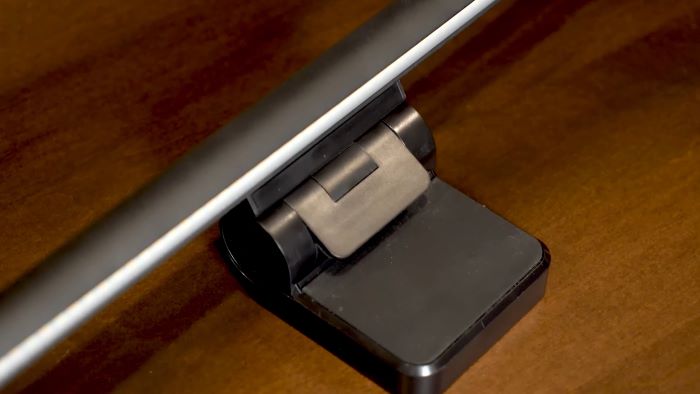
Unlike cheaper entry-level models, the Baseus light bar comes with advanced touch sensors for adjusting light settings. One sensor turns the light on/off, another changes color settings, and the last adjusts brightness. It offers three color settings: warm white, neutral white, and cool white, along with stepless dimming from 100% to as low as 5%.
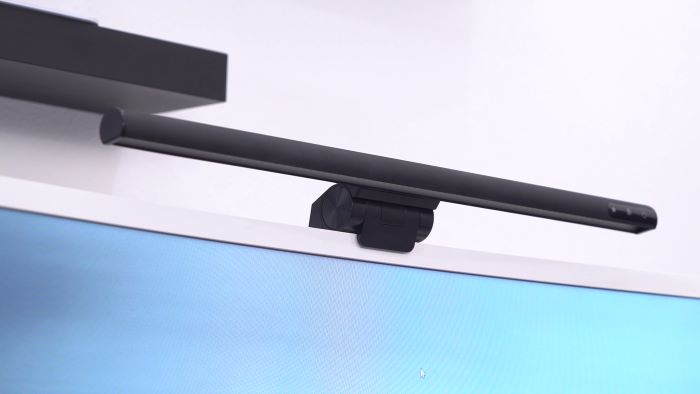
Unfortunately, the asymmetrical lighting that is advertised by this brand doesn’t work nearly as well as some of the more expensive models in terms of light bleed onto the screen. Even though the Baseus light bar includes touch sensors for buttons, I found that they were overly sensitive and hard to use for dimming. Frequent changes to settings can become annoying.
2. Quntis
Next is the Quntis ScreenLinear Pro. It is a similarly priced alternative to the Baseus brand. Priced at $40, it falls within the range of most mid-range models that I have tested. According to Amazon, it is listed as the #1 Best Seller in USB Reading Lights. With a rating of 4.6 out of 5 stars and almost 8,000 reviews, it definitely seems to have good potential.
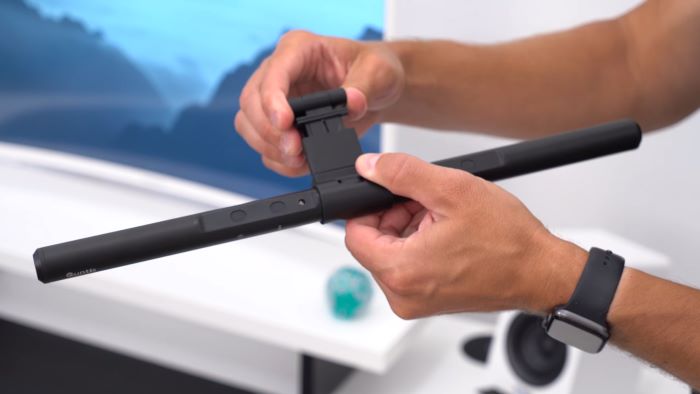
Quntis uses a weighted system to stay on top of the monitor, working slightly better than the Baseus. Its rounded design is more flexible, accommodating various monitor shapes and sizes. The mounting bracket allows for some movement to pivot the light towards the keyboard, though not as extensively as the Baseus. An upgraded version now provides up to 45 degrees of pivot, offering a significant range for better light aiming.

The touch sensors on the Quntis are quite nice, offering two different options for making adjustments. You can perform a short press to quickly change the brightness and color, or a long press for stepless adjustment from 5% brightness to 100% maximum brightness, or from the coolest to the warmest setting within the color range.

Like the Baseus, the Quntis struggles with asymmetrical lighting, causing noticeable light bleed onto the screen. Pivoting the light away can result in it shining into your eyes, potentially more annoying than screen reflection. The Quntis is also the smallest among all light bars, which can be either an advantage or disadvantage depending on your needs.
3. BenQ ScreenBar
Moving onto the most expensive option in the list that doesn’t include a puck for adjustment is the BenQ ScreenBar. This model retails for about 2.5 times more than the mid-range options and would be considered top of the line at $109. With an average rating of 4.7 out of 5, and almost 5,000 ratings, it is one of the highest-rated options available.

The mounting system on the BenQ is the best I’ve tried for fitting a wide range of monitor sizes and shapes. It had no issues fitting on all of the different monitors I tried. The BenQ offers a ton of flexibility with light color options, providing eight different choices ranging from 2,700k to 6,500k, and 15 levels of brightness using its auto dimming feature.
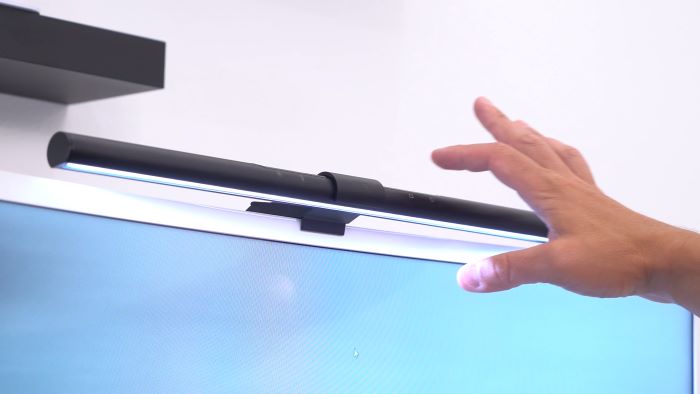
One of the biggest issues I have with the other light bars tested is the glare that the lights create on the monitor. The BenQ is the only light bar I’ve used that effectively reduces the glare and creates a distinct line where the light bar doesn’t spread its light. This is an amazing feature that might be highly valuable to many users.
4. Xiaomi
The Xiaomi is an interesting light bar priced at only $69. It is the least expensive option I have tested that includes a wireless puck for adjustments, and after using the wireless puck versions of these light bars, they have become my favorite. Xiaomi has an average score of 4.5 out of 5 with 3000 ratings.

The mounting system on the Xiaomi is closer to the Baseus than the other options in this list. With a rounded shape, it fits well on thick or rounded-back monitors. The front mount uses a unique magnet system to secure the light bar, offering up to 25% magnetic rotation for better light direction.
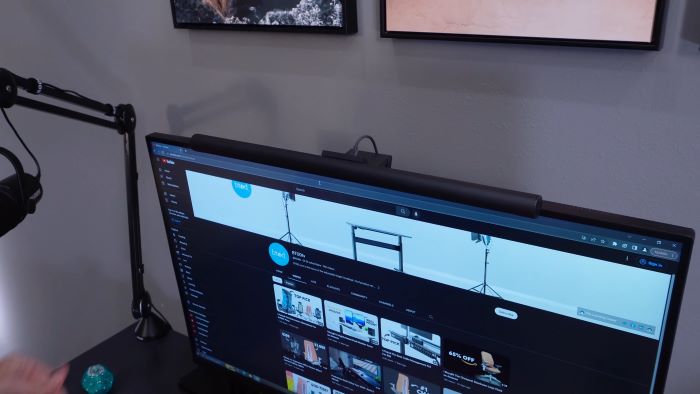
My favorite feature with the Xiaomi is the wireless puck, allowing easy adjustments with a short press to turn the light on/off. Rotating the puck adjusts brightness, and pressing and rotating adjusts color settings. Xiaomi’s build quality is better than the cheaper options, but its asymmetrical light function doesn’t work as well as the BenQ model, in my opinion.
5. BenQ ScreenBar Halo
Saving the best for last, the BenQ ScreenBar Halo, priced at $179, is the most expensive and includes a wireless puck for adjustments. It holds an average rating of 4.5 out of 5 stars, labeled as Amazon’s Choice and the best overall pick. However, its score is lower than the alternative BenQ model, which is about $70 less.

Similar to the more basic BenQ ScreenBar, this Halo version features a similar weight mechanism to hold it in place. BenQ’s versatile mounting system works well on a variety of monitors. It not only serves as a mount but also includes the Halo light feature, offering proper backlighting for a balanced setup experience.
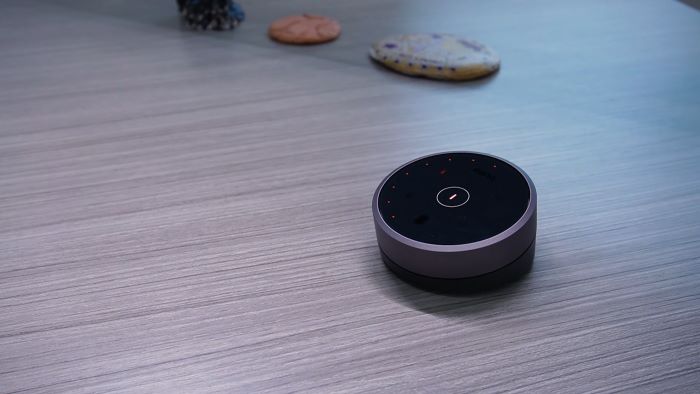
The BenQ ScreenBar Halo offers three lighting options: Front and Back light on, Front light only, and Back light only. A standout feature is the ability to set and save preferred brightness and color temperatures as favorites. With extensive customization in color ranges and brightness settings, the wireless puck allows easy adjustments and quick access to predetermined settings for preferred colors or brightness levels.

Similar to the other BenQ model, the Halo is the only other option that provides actual asymmetrical lighting. Combine that with the cool backlight feature and intuitive wireless puck, and without question, this is my favorite option. You just need to decide if it’s worth spending the extra money for these features.
Bottom Line
Ultimately, these 5 highly rated Amazon monitor light bars each bring unique features to improve workspace lighting. Considering factors like asymmetrical lighting and build quality can help you pick a light bar that fits your needs. Whether you value flexibility, easy adjustments, or customized lighting, these options could make a difference.




